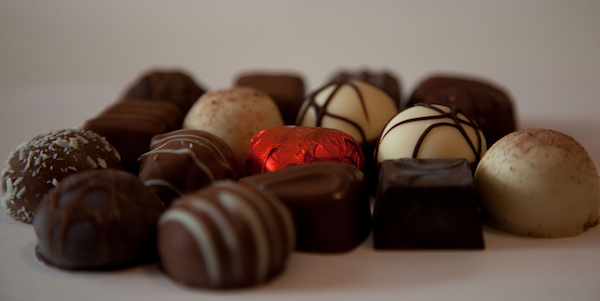
[Image above] Credit: david pacey; Flickr CC BY 2.0
It’s no secret: I like chocolate.
And that which I like, I like to write about.
Case in point: penguins, marine creatures, rock music, superheroes, and running.
And when it comes to chocolate, I’ve managed to find a few ways to sneak the delicious material’s science into the Ceramic Tech Today rotation—here, here, and here.
So because it’s Valentine’s day, it seems like the perfect time to add another link to that list.
It’s not difficult—there’s an incredible amount of science behind chocolate’s history, production, and melt-in-your-mouth goodness. For example, according to an American Chemical Society article, chocolate contains some 800 compounds that contribute to the confection’s complex and delicious flavor profile.
Chocolate really is a technological marvel.
Materials scientists and science communicator Mark Miodownik agrees. In a 2007 Materials Today article, Miodownik writes, “Chocolate is no less remarkable and technically sophisticated a material than semiconductors or steels.”
And like semiconductors and steels, there’s no dearth of materials science when it comes to chocolate.
I’ve reported before that scientists have performed detailed studies of chocolate’s crystalline structure, which is disrupted when fat or sugar particles migrate to chocolate’s surface. These migrations cause an unsightly yet perfectly safe alteration of chocolate’s appearance.
Called bloom, these white splotches on the surface of chocolate are simply where its crystalline structure has been disturbed—and although they don’t mean the chocolate is bad, they make the treat unappetizing to consumers — and so are a big concern for chocolate manufacturers.
Researchers have even put chocolate through the rigor of synchrotron X-ray experiments to study how fat particles migrate through chocolate’s porous structure, providing important clues to chocolatiers about how to prevent bloom.
It’s the most delicious version of science I can imagine.
[Speaking of which, the MIT Laboratory for Chocolate Science has you covered if you’re looking for more of the science behind chocolate.]
But when it comes to the different kinds of chocolate, which is better—milk or dark?
The difference, besides the extra ingredient of milk, is that milk chocolate contains <20% cacao, while dark chocolate boasts >45% cacao. (Cacao is the bean from which cocoa comes from, and the portion of the chocolate that touts its health benefits.)
And forget white chocolate—it’s a chocolate imposter, because although the pale stuff contains cocoa butter fat, it doesn’t actually contain the rest of the good stuff from cacao.
So beyond personal preference, what can science say about which kind comes out on top?
When considering chocolate’s mood-setting ability, health benefits, texture, flavor, and cost, it seems that there benefits to both. Watch this video from ACS Reactions to get the play-by-play of how dark squares stack up to milk chocolate. Then let us know—which is your preference, and why?
Credit: Reactions; YouTube
